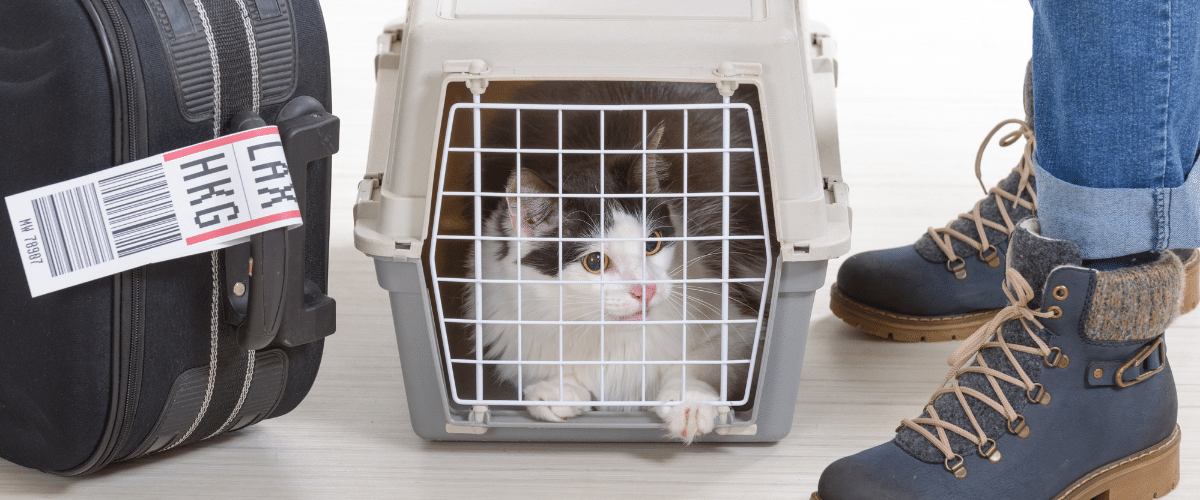By Angelica Botta, LLB
Last month, the U.S. Department of Transportation announced it has amended the Air Carrier Access Act, affecting the regulations concerning service animals and emotional support animals. The department received more than 15,000 comments from passengers with disabilities, airlines, flight attendants, airport staff, and members of the public regarding air travel with animals.
The allowance of emotional support animals (ESA) on airplanes is a controversial topic, with one side of the continual argument relying on the benefits that pets have on their owner’s mental health, while the other side points to the disruption and stress caused to fellow passengers.
Emotional support animals were previously defined as service animals and covered any animal; in fact, passengers on some flights in the past saw service pigs, ducks, ponies, and even kangaroos.1
American Airlines, for example, previously allowed passengers to bring their emotional support animals on board with them as long as they had a note from a doctor that certified that the owner’s mental health would benefit from the animal’s presence. This stance reflects the important truth that not every disability is visible, and it is extremely difficult to demonstrate mental health issues.
However, people took advantage of this loophole by bringing their untrained pets into the main cabin to avoid paying additional fees and/or storing them in the hold. In 2018, airlines reported that requests for emotional support pets on airlines rose more than 75%, and with that reports of bad pet behaviour on planes also increased. This came after policy updates in 2016-2017, following an 84% increase in reported incidents involving service and support animals, including urination/defecation, biting, and even a reported attack by a dog. While one can understand not wanting to put your pet in the hold, the abuse of the rules led to accidents on board and crew members getting hurt.
Consequently, on December 2, 2020, the Department of Transportation (DOT) amended the relevant Act, and the changes came into force on January 4. The amendment closed the emotional support animal loophole, to ensure safe transportation for service animals, passengers, and crew members. The significant change means that emotional animals are not considered service animals anymore, but rather regular old pets. Service animals are defined as “a dog that is individually trained to do work or perform tasks for the benefit of a person with a disability”. The amended Act allows airlines to require forms developed by the DOT attesting to a service animal’s health, behaviour, and training, and, if taking a long flight, attesting that the service animal can either not relieve itself or can relieve itself in a sanitary manner.
While many aspects of the amended Act aim to protect people with disabilities and ensure they remain supported during air travel, others may be more questionable. The regulations allow “airlines to require a service animal to fit within its handler’s foot space on the aircraft” – meaning airlines can refuse medium-to-big dogs, such as Labradors, which are often used as service dogs. Enforcing this without discriminating against people with disabilities may prove a considerable obstacle. Indeed, people with disabilities have already voiced concerns that they would face increased difficulties in bringing their service dogs on board. Finding the right balance has always been a struggle for the DOT, which did make several changes in favour of pet owners, including reducing the number of preboarding forms and eliminating the need to visit the vet before the flight (as it would be a financial burden for the owner).
According to the U.S. Government’s Federal Register, airlines and relevant organisations had welfare concerns for several kinds of animals who had been taken into plane cabins, especially capuchin monkeys. One such organisation, ADI-NA (Assistance Dogs International), expressed concerns that subjecting capuchins to the stress of air travel increases the chance of aggressive or disruptive behaviour. It’s reasonable to assume that many other animals would feel stress when flying on an airplane, although if the alternative is being put in cargo there would be other welfare considerations.
In the U.K., emotional support animals are not legally recognised and therefore they are considered pets, subject to the standard guidelines of the airlines. Some airlines, such as Ryanair, Easyjet, and Virgin Airlines are more lenient towards emotional support dogs. Assistance pets (only dogs and cats) can fly in the cabin with the owner as long as it is demonstrated that they are trained by a recognised training organisation.
Sources
1https://www.bbc.co.uk/bbcthree/article/39a2a5b9-9eea-4666-b5b5-fa3223ae248a


















